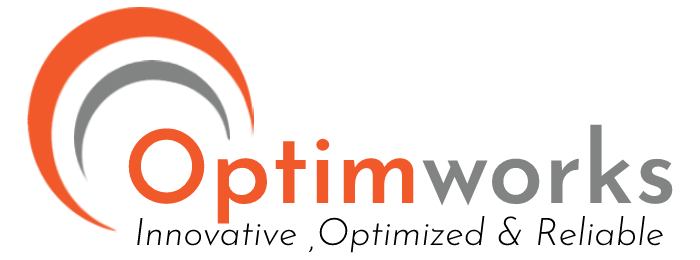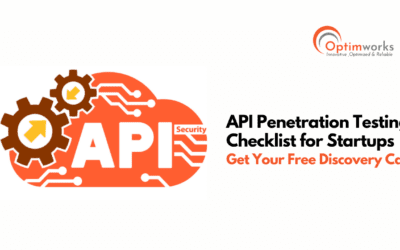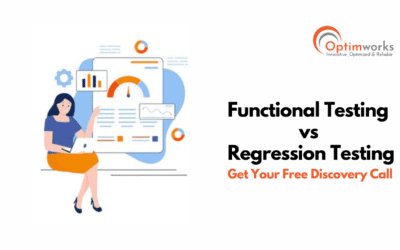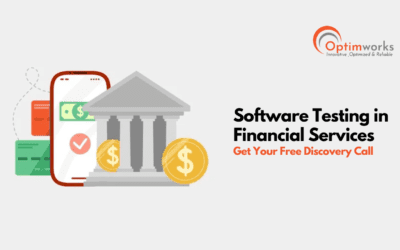In today’s digital-first world, companies rely on artificial intelligence (AI) and machine learning (ML) models for big decisions—whether it’s fraud detection in banking, risk scoring in healthcare or product recommendations in eCommerce. While the business value is huge, making sure these models are accurate, compliant and reliable is a challenge. That’s where QL Test Model Building comes in.
Unlike traditional software testing, QL Test Models go beyond functionality. They check data quality, algorithmic fairness, test under real world loads and ensure regulatory compliance. Without this they risk data bias, model drift and poor predictions that can damage customer trust and business outcomes.
The stakes are higher in regulated industries like BFSI and healthcare where mistakes can trigger fines, reputation damage or financial loss. QL Test Model Building provides a structured way to test, validate and continuously monitor AI/ML models throughout their lifecycle.
In this blog, we’ll explore why it matters, the components of an effective framework, and how Optimworks helps enterprises simplify and scale this critical process.
Why QL Test Model Building Matters
Artificial intelligence and machine learning are now integral to business, but unlike traditional applications, their reliance on dynamic data introduces risks that standard testing cannot cover. This makes QL Test Model Building essential.
Model Reliability & Accuracy
Data is the foundation of AI models. If the training data is biased, incomplete or out of date, the predictions will be wrong. Testing ensures consistent results across all scenarios.
Bias & Fairness
With rising concerns over fairness, a biased lending model, for instance, could deny loans unfairly. QL Test Models validate fairness metrics, minimizing systemic bias.
Regulatory Compliance
BFSI and healthcare sectors need to comply with frameworks like GDPR, HIPAA and RBI. Testing ensures compliance, no penalties.
Operational Stability & ROI
Models that excel in training may fail in production. QL Test Models detect drift, anomalies, and degradation, safeguarding business trust and ROI.
Ultimately, QL Test Model Building embeds accuracy, compliance, and trust into AI systems—transforming it into a true business enabler.
Key Components of QL Test Model Building
Building a QL Test Model isn’t about running one off tests—it’s about creating a framework that continuously tests model performance, compliance and trust. Here are the key components every organisation should consider:
1. Data Quality Testing
Data is the foundation of any AI/ML model. Poor data leads to poor predictions. QL Test Models include:
- Data validation to ensure accuracy, completeness, and consistency.
- Bias detection to identify whether training datasets unfairly skew outcomes.
- Noise and anomaly checks to filter corrupted or irrelevant inputs.
2. Model Performance Testing
- Beyond accuracy, models must be tested across multiple dimensions:
- Precision & recall for balanced outcomes.
- F1 scores & confusion matrices for holistic performance assessment.
- Stress testing under different data distributions to mimic real-world environments.
3. Explainability & Interpretability
- Black-box AI is no longer acceptable. Regulators and businesses demand explainability:
- QL Test Models validate whether predictions can be explained in human terms.
- Helps stakeholders understand “why” a decision was made, not just “what” the decision was.
4. Compliance & Security Validation
Testing checks models against industry specific regulatory requirements such as GDPR, HIPAA, PCI-DSS or RBI. Security testing ensures sensitive data isn’t leaked or misused.
5. Model Drift & Continuous Monitoring
AI models degrade over time when exposed to new data (concept drift). QL Test Models include continuous monitoring pipelines to flag performance drops and trigger retraining.
6. Automation & CI/CD Integration
To scale QL testing must integrate with CI/CD pipelines. Automated frameworks reduce testing cycles, faster releases and no manual intervention.
Common Pitfalls Without Proper QL Testing
Many enterprises rush to deploy AI/ML models without building a structured QL Test Model, and the consequences can be severe. Here are the most common pitfalls:
1. Hidden Bias in Predictions
Without bias testing models can produce unfair or discriminatory results. For example a lending model could inadvertently deny loans to certain demographics and expose the business to regulatory and reputational risk.
2. Model Drift Going Unnoticed
When data changes unmonitored models start to produce inaccurate predictions. A fraud detection system trained on last years data might not catch new and sophisticated attacks. Without QL monitoring performance degradation goes undetected until it causes real damage.
3. Compliance Failures
Financial services, healthcare and retail all have strict regulatory frameworks. Lack of compliance testing during testing can result in multi million dollar fines, customer distrust or even service suspension.
4. Overfitting and Poor Generalization
A model that trains well but fails in production is a classic trap. Without stress testing across multiple datasets, you risk deploying models that break in real world complexity.
5. Delayed Releases & Rising Costs
Fixing model issues post-deployment costs far more than addressing them in testing. Without QL Test Models embedded in CI/CD, organizations face longer release cycles and escalating operational expenses.
In short, skipping QL testing isn’t just a technical oversight—it’s a business risk. You lose money, trust and competitive advantage when quality is an afterthought.
Step-by-Step Process of QL Test Model Building
Building a QL Test Model isn’t about adding another layer of QA—it’s about embedding trust and performance checks throughout the AI lifecycle. Here’s a structured approach that enterprises can adopt:
1. Define Business & Compliance Goals
Before you start testing, your team needs to agree on why the model exists. Is it to reduce fraud, improve recommendations or automate credit risk scoring? Defining KPIs and mapping them to compliance mandates (GDPR, HIPAA, PCI-DSS, RBI etc) means testing isn’t just technical, but business driven.
2. Collect & Validate Data
Data is the foundation of AI. Testing starts with validating if datasets are representative, complete and bias free. This includes:
- Checking for missing or duplicate records
- Verifying anonymization for compliance
- Assessing balance across demographic groups
- A QL Test Model ensures “garbage in, garbage out” never becomes reality.
3. Build a Testing Framework
This is where the actual test model is constructed. Key activities include:
- Unit testing ML components like feature engineering pipelines
- Regression testing across model iterations
- Security testing to prevent data leaks
- Compliance testing with embedded regulatory rules
4. Run Bias & Fairness Tests
Models must be tested against fairness benchmarks. For example, does a credit scoring model produce the same outcome for age, gender or geography? Fairness metrics like demographic parity and equalized odds are validated here.
5. Stress Test for Scalability
Real world usage is unpredictable. QL testing simulates high transaction loads, noisy data and real time scenarios to test performance under stress. This ensures the model won’t fail in production.
6. Monitor in Production
QL testing doesn’t stop at deployment. Drift monitoring, anomaly detection and performance dashboards ensure ongoing reliability. By embedding testing into CI/CD pipelines you keep quality as data evolves.
With this process you can turn AI from a risky experiment into a business asset.
Tools & Frameworks for QL Test Models
A QL Test Model is only as strong as the frameworks supporting it. While every organization’s stack will vary, these are the most widely used tools that enable structured and scalable testing.
1. Model Development & Validation
- TensorFlow Extended (TFX) – Offers a full pipeline for model training, validation, and serving.
- PyTorch Lightning – Simplifies training workflows and integrates easily with testing frameworks.
2. Testing & Validation Libraries
- pytest / unittest – For unit and regression testing of ML pipelines.
- DeepChecks – Purpose-built for testing data integrity, distribution shifts, and model performance.
- Evidently AI – A lightweight library for monitoring model drift and generating performance reports.
3. Bias & Fairness Testing
- IBM AI Fairness 360 (AIF360) – Provides metrics and bias mitigation algorithms.
- Fairlearn – An open-source toolkit for fairness evaluation and visualization.
4. Continuous Integration & Monitoring
- MLflow – Tracks experiments, models, and performance metrics.
- Kubeflow – Automates model deployment and integrates with CI/CD pipelines.
- Prometheus + Grafana – For real-time monitoring of production models.
5. Security & Compliance Testing
- Adversarial Robustness Toolbox (ART) – Helps validate models against adversarial attacks.
- Custom compliance testing scripts – Tailored to PCI-DSS, GDPR, HIPAA, or RBI guidelines.
Together these tools are the foundation of a QL Test Model. It’s not just about choosing tools, it’s about integrating them into a seamless pipeline where testing is automated, continuous and business aligned.
How Optimworks Supports QL Test Model Building
Building and maintaining a QL Test Model requires not just tools, but deep expertise in QA, compliance, and domain-specific testing. This is where Optimworks makes the difference.
1. Domain-Aware Expertise
We blend experience across BFSI, healthcare, SaaS and retail so testing isn’t just technical but compliance driven. Our QA engineers know the regulatory nuances of frameworks like GDPR, HIPAA, PCI-DSS, SOX and RBI so your AI models are tested against business goals and compliance standards.
2. End-to-End Testing Coverage
From data validation to bias testing and drift monitoring, Optimworks provides a structured QL testing framework tailored to your AI lifecycle. Whether it’s unit-level validation or high-volume stress testing, we ensure models remain reliable at every stage.
3. AI-Powered Test Automation
We integrate AI driven automation to speed up test execution. This reduces manual effort, minimizes errors and speeds up release cycles all while maintaining accuracy and coverage.
4. Continuous Monitoring & CI/CD Integration
AI models don’t stop evolving after deployment. Optimworks embeds QL testing directly into your CI/CD pipelines, with continuous monitoring dashboards that track performance, detect anomalies, and flag drift in real time.
5. Faster ROI with Risk-Free Pilots
We understand that enterprises want measurable outcomes, not endless testing cycles. That’s why Optimworks offers risk-free pilot programs where you can validate our QL Test Model approach on your own AI systems—seeing value before committing to scale.
If your AI models power mission critical business functions testing can’t be an afterthought. With Optimworks you get resilient, compliant and trustworthy AI ready to deliver business impact from day one.
Business Benefits of QL Test Models
For many organisations AI is no longer optional – it’s core to digital transformation. But without structured testing AI investments can quickly become liabilities. A QL Test Model ensures organisations not only protect their investments but also unlock real business value.
1. Stronger Compliance & Less Risk
Regulations are tightening worldwide – compliance is non-negotiable. QL testing validates models against standards like GDPR, HIPAA, PCI-DSS and RBI guidelines – so organisations avoid penalties and customer trust.
2. More Reliable Models
A model that drifts or fails under stress can cause reputational and financial damage. QL Test Models do reliability checks so models keep performing accurately even as data and environments change.
3. Faster Time-to-Market
Testing in CI/CD pipelines means businesses can release new AI features faster without compromising quality. Faster, safer releases means staying ahead of the competition.
4. Less Cost Over Time
Fixing issues post deployment is costly. By catching bias, errors and compliance gaps early organisations save on remediation and re-engineering costs.
5. Business Confidence & Adoption
Validated AI gives confidence. Stakeholders, regulators and end-users are more willing to adopt AI driven solutions when they are proven to be fair, secure and compliant.
QL Test Model Building turns AI from a high risk experiment into a business asset. Organisations see stronger compliance, faster innovation and higher ROI when testing is embedded into the AI lifecycle.
Future Trends in QL Test Model Building
As AI takes off, QL Test Models must evolve. Key trends to watch:
- AI-Driven Testing: Self-healing QA systems will detect anomalies, adapt to drift and optimize test cases with minimal human intervention.
- Explainable AI (XAI) Validation: Models will have transparency checks, so predictions can be explained to auditors and business leaders.
- Compliance-as-Code: Automated pipelines will continuously validate GDPR, HIPAA and PCI-DSS, instead of one-off audits.
- Resilience Against Adversarial Attacks: Testing will focus on robustness against data poisoning, adversarial inputs and model theft.
- Industry-Specific QA Frameworks: Domain-aware QL frameworks will emerge for BFSI, healthcare and autonomous systems.
These trends mean QL Test Model Building is key to scaling trustworthy AI.
Conclusion
AI and machine learning are changing the way we run our businesses, but without structured validation they bring serious risks—bias, compliance failures and performance drift can’t be ignored. QL Test Model Building addresses these issues by making sure AI systems are accurate, fair, compliant and resilient—turning them from experimental tools into business assets.
At Optimworks we help enterprises embed QL testing into every stage of the AI lifecycle. With expertise in BFSI, healthcare, retail and SaaS we combine regulatory awareness, automation and continuous monitoring into one framework. The result? Faster releases, less risk and trusted AI adoption.
Ready to de-risk and scale your AI initiatives? Start with a risk-free pilot from Optimworks today.




